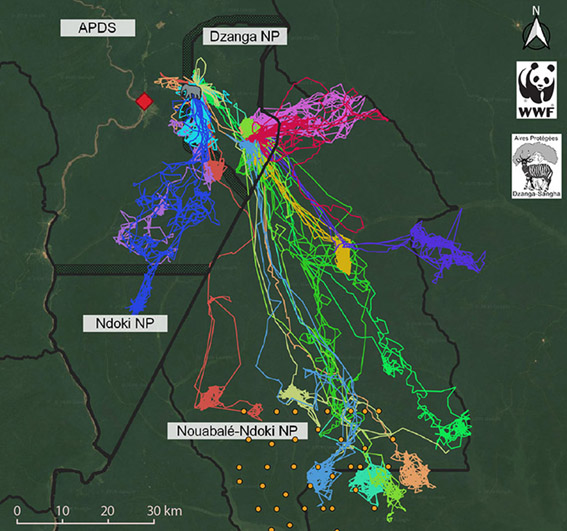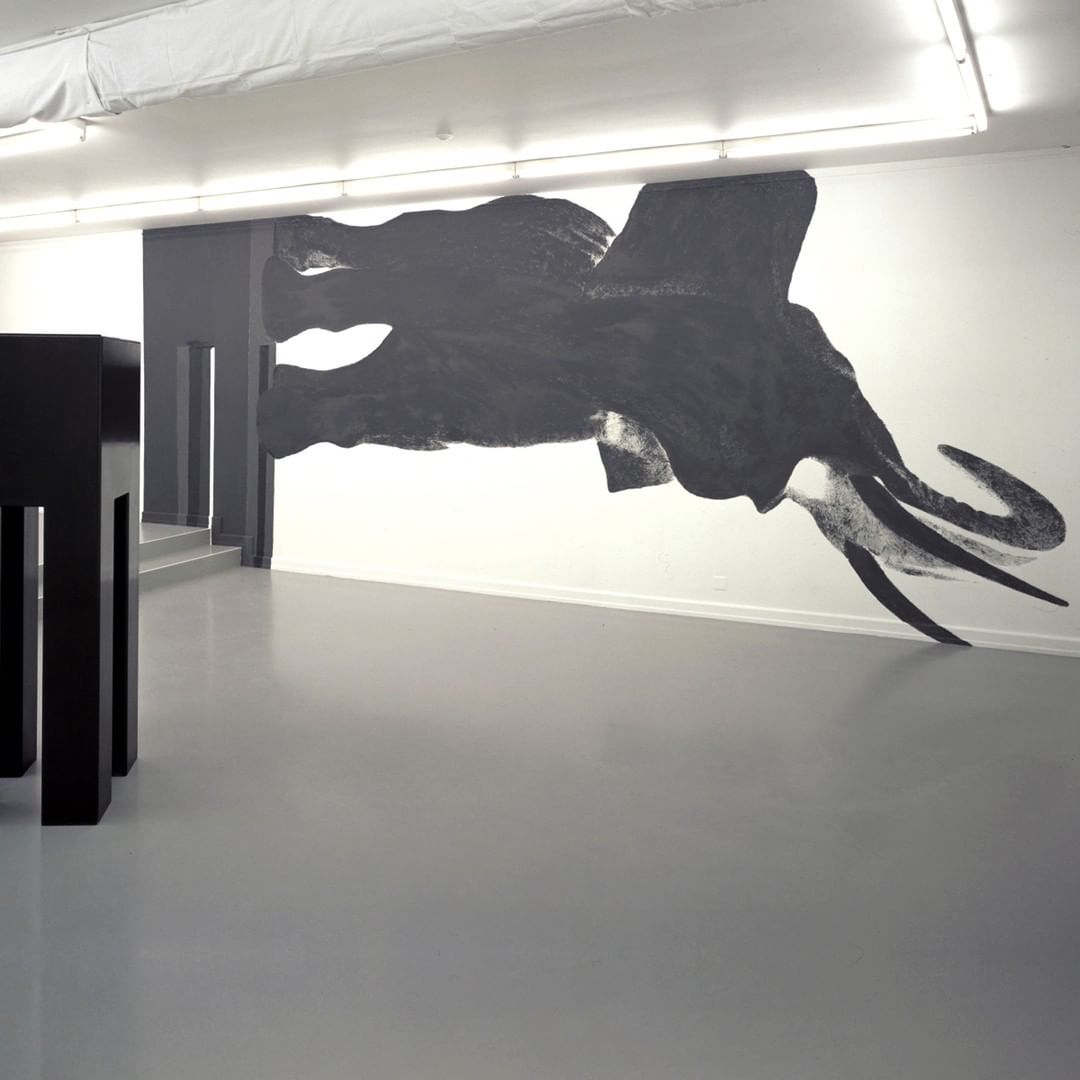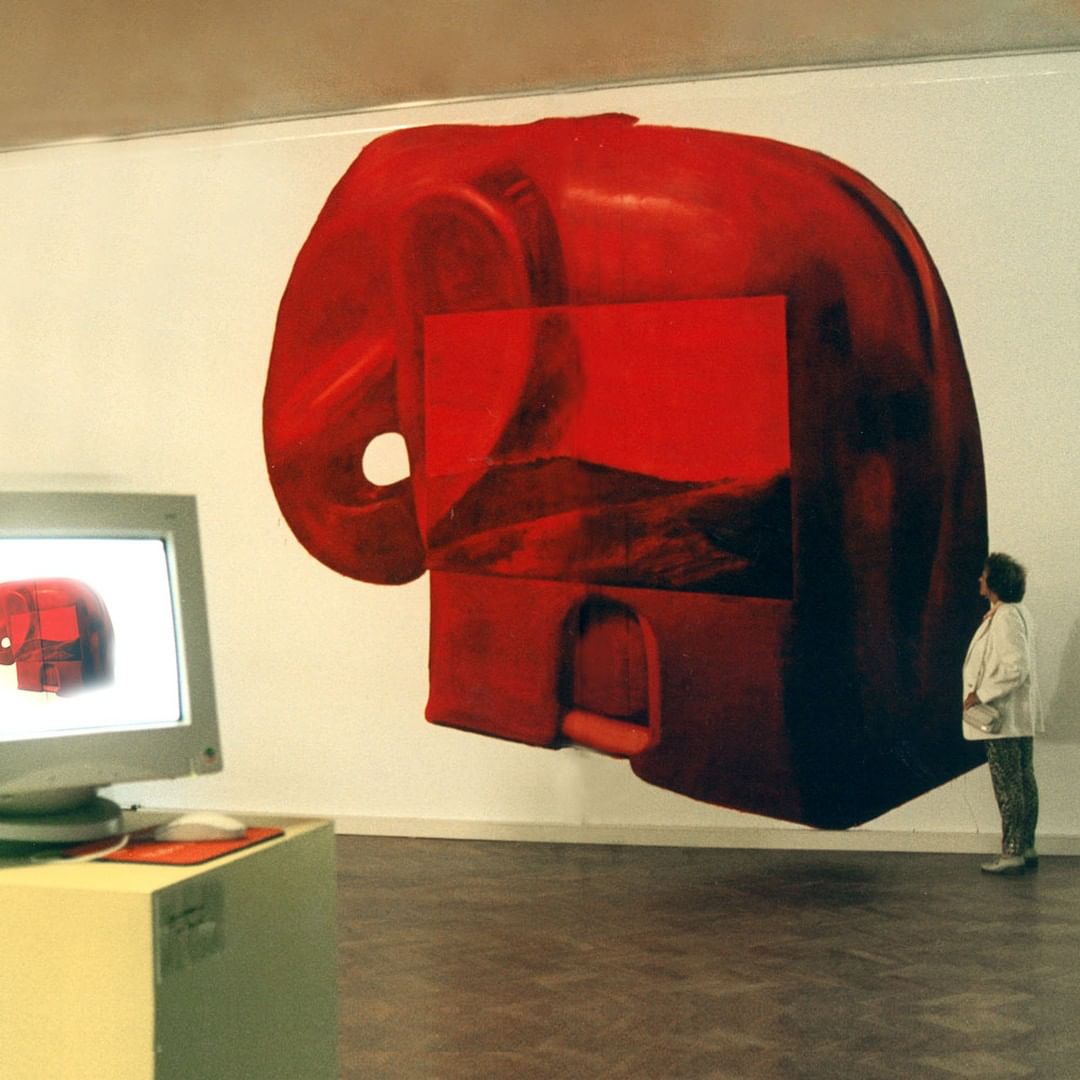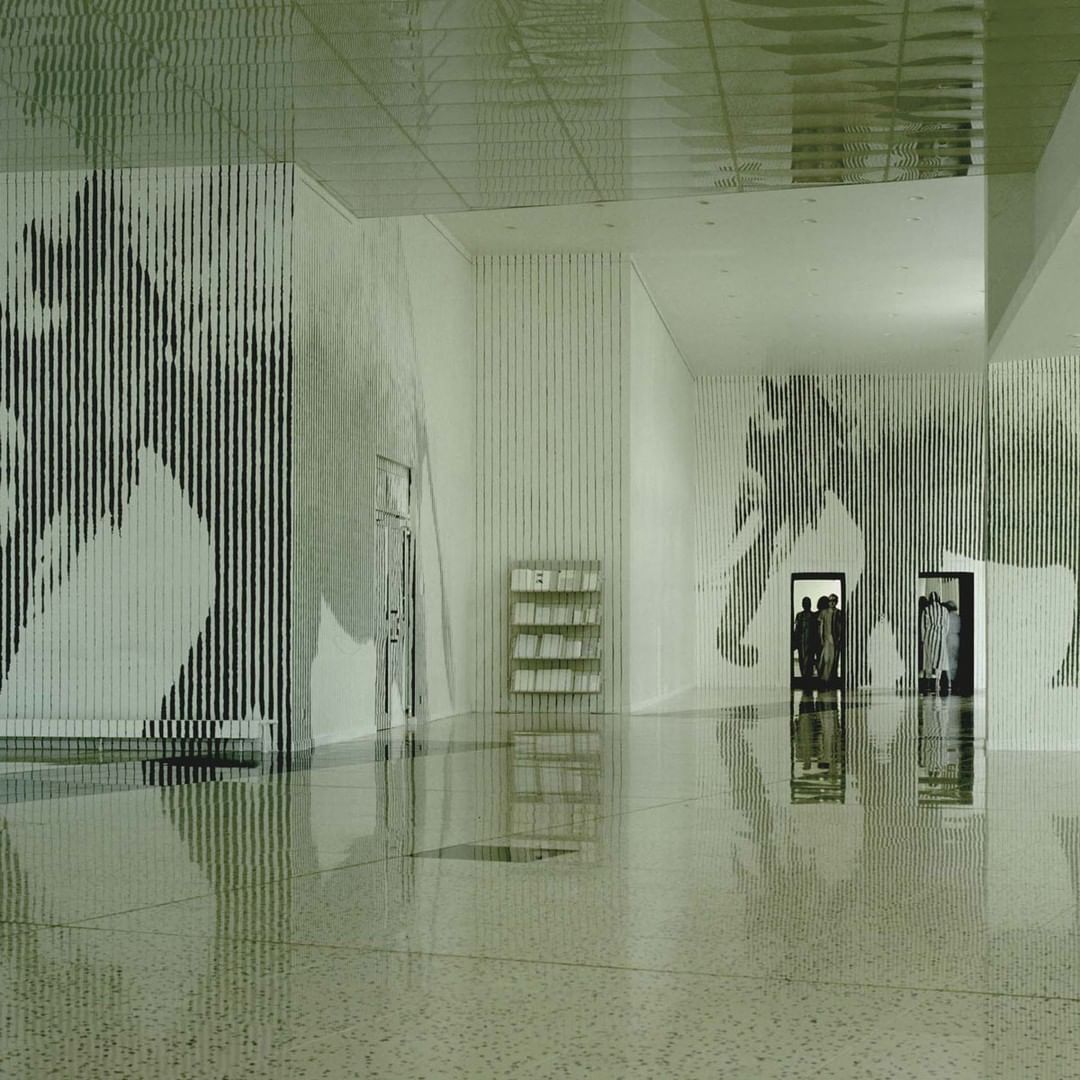
Los elefantes son caminantes
El mapa muestra lo que han caminado algunos elefantes en la primera mitad de este año, mientras muchos humanos permanecen confinados.
El Fondo Mundial para la Naturaleza / Área Protegida Dzanga-Sangha hace más de dos años equipó a estos elefantes con collares satélite cerca de Dzanga Bai.
En el mapa se puede ver a cuatro de estos elefantes caminar en el Congo, en línea recta a través de la cuadrícula acústica (puntos naranjas en la parte inferior del mapa), donde se detienen, en un área recientemente talada justo al sureste del parque.
Los datos permiten conocer mejor la ecología del movimiento de los elefantes en el terreno :
1. Las familias pueden extenderse en grandes distancias.
2. Cada una de los densas manchas en el mapa, muestra un área central más pequeña, aunque todavía grande, en donde pasan la mayor parte de su tiempo.
3. Algunas familias permanecen relativamente cerca de Dzanga Bai, mientras que otras viajan unas dos veces al año largas distancias para visitar a la familia extendida.






